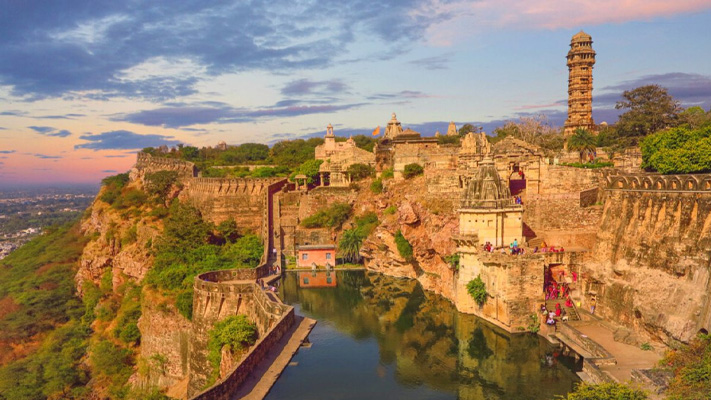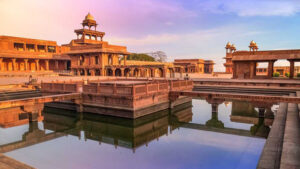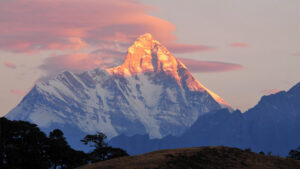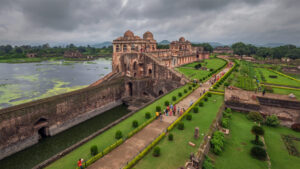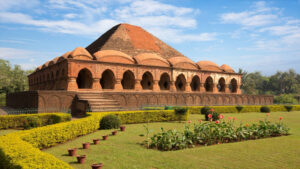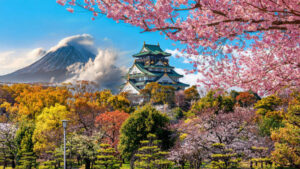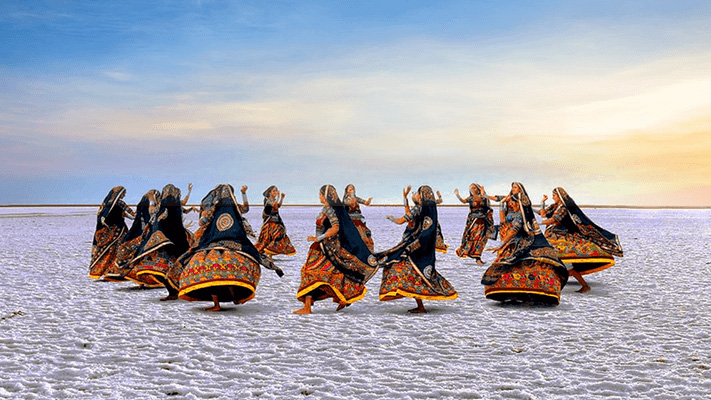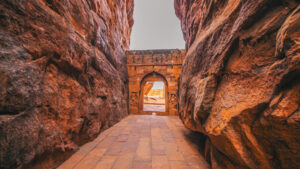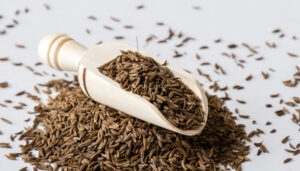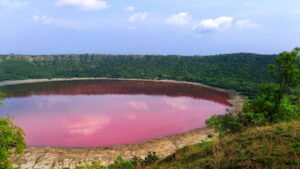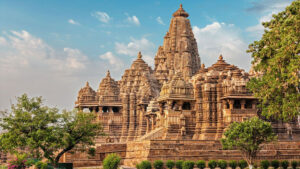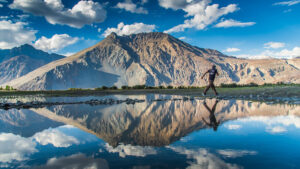CHITTORGARH FORT, CHITTORGARH, RAJASTHAN – UNVEILING THE VALOR AND MAJESTY OF RAJPUT HERITAGE

Chittorgarh Fort, located in the city of Chittorgarh in Rajasthan, India, is one of the largest and most historically significant forts in the country. Perched atop a hill, the fort stretches over an expansive area and is a UNESCO World Heritage Site. With its imposing walls, majestic palaces, and ancient temples, Chittorgarh Fort is a symbol of Rajput valor, resilience, and cultural heritage.

The fort has a rich history dating back to the 7th century when it was initially built by the Maurya dynasty. Over the centuries, it was expanded and fortified by various Rajput rulers, including the Sisodia Rajputs of Mewar. Chittorgarh Fort holds great importance as it witnessed several fierce battles, heroic acts, and acts of self-sacrifice during its history.
One of the most famous tales associated with Chittorgarh Fort is the legendary story of Rani Padmini. According to the folklore, Rani Padmini, the queen of Chittorgarh, performed “jauhar” (self-immolation) along with several other women to protect their honor from the invading forces of Alauddin Khilji. This act of sacrifice has become an enduring symbol of Rajput bravery and pride.
The fort boasts numerous architectural marvels that showcase the grandeur of Rajput architecture. Some of the key attractions within the fort include the Vijay Stambh (Tower of Victory), a nine-story tower adorned with intricate carvings and dedicated to Lord Vishnu. The Kirti Stambh (Tower of Fame), built in the 12th century, is another prominent structure known for its Jain architecture and intricate sculptures.
Visiting Chittorgarh Fort is not only a journey through history but also an opportunity to soak in the panoramic views of the surrounding landscapes. The fort’s strategic location on a hill provides commanding vistas of the city of Chittorgarh and the surrounding countryside.
Inside the Fort
Inside the expansive Chittorgarh Fort, visitors can explore a wealth of historical and architectural treasures that offer a glimpse into the grandeur and cultural significance of the fort. Here are some notable attractions within the fort:

- Vijay Stambh (Tower of Victory): This impressive nine-story tower stands tall within the fort and was built by Maharana Kumbha to commemorate his victory over the Muslim ruler Mahmud Khilji. The tower is adorned with intricate carvings depicting scenes from Hindu mythology and offers panoramic views of the surrounding area from its top.
- Kirti Stambh (Tower of Fame): Dedicated to the Jain religion, the Kirti Stambh is a seven-story tower adorned with Jain sculptures and carvings. It serves as a symbol of Jainism’s influence and contribution to the fort’s history.
- Rana Kumbha Palace: This palace, built by Maharana Kumbha, is one of the most impressive structures within the fort. Although mostly in ruins now, it once showcased exquisite architectural details, including balconies, courtyards, and ornate windows. The palace is also associated with the legendary musician Tansen, who performed in the court of Mughal Emperor Akbar.
- Padmini Palace: Located within the fort, the Padmini Palace is associated with the renowned tale of Rani Padmini. It is believed to have been the residence of the queen and features a mirror chamber with a pool in the center. The pool reflects the surrounding beauty, adding to the palace’s charm.
- Jain Temples: Chittorgarh Fort is home to several ancient Jain temples, including the Sammidheshwara Temple, the Bhagwan Adinath Temple, and the Kirti Mandir. These temples showcase exquisite Jain architecture, intricate sculptures, and serene atmospheres for spiritual contemplation.
- Gaumukh Reservoir: Located near the main entrance of the fort, the Gaumukh Reservoir is a sacred water source believed to have originated from a cow’s mouth-shaped opening. It is considered a holy spot, and visitors can witness the natural spring that feeds the reservoir.
- Kalika Mata Temple: Situated on the southern end of the fort, the Kalika Mata Temple is an ancient shrine dedicated to the Hindu goddess Kali. It is believed to date back to the 8th century and features intricate carvings and a serene ambiance.
As visitors wander through the fort’s narrow lanes, they will encounter other structures, gates, and remnants of palaces that further contribute to the fort’s historical charm. The fort’s overall layout and architectural remnants provide a glimpse into the lives and grandeur of the Rajput rulers who once resided within its walls.
Visitor Experiences and Activities
When visiting Chittorgarh Fort, there are several experiences and activities that visitors can enjoy to make the most of their time within this historical landmark. Here are some suggestions:

- Explore the Fort on Foot: Chittorgarh Fort is vast, so set aside ample time to explore its various attractions on foot. Walking through the fort allows you to soak in the ambiance, appreciate the architectural details, and discover hidden gems within its walls.
- Enjoy Panoramic Views: Climb the Vijay Stambh (Tower of Victory) or other elevated points within the fort to enjoy breathtaking panoramic views of the surrounding landscape. The views are particularly stunning during sunrise or sunset, offering a mesmerizing backdrop to the fort’s grandeur.
- Attend the Light and Sound Show: Experience the fort’s history come alive through a mesmerizing light and sound show held in the evening. The show narrates the tales of valor, sacrifice, and historical events associated with Chittorgarh Fort, providing a captivating and immersive experience.
- Witness the Evening Aarti: Visit one of the temples within the fort, such as the Kalika Mata Temple or the Sammidheshwara Temple, during evening Aarti (prayer ceremony). Participating in or observing the traditional rituals and devotional chants can be a spiritually uplifting experience.
- Photography Opportunities: Chittorgarh Fort offers abundant opportunities for photography enthusiasts. Capture the intricate carvings, the architectural marvels, and the panoramic views from different vantage points. The fort’s imposing walls, ancient temples, and remnants of palaces make for stunning subjects.
- Experience the Sound and Light Show at Fateh Prakash Palace: Adjacent to the fort, the Fateh Prakash Palace hosts an evening sound and light show that highlights the history and legends associated with Chittorgarh. It provides another perspective on the fort’s heritage and is a visual delight.
- Visit Nearby Attractions: Explore the attractions near Chittorgarh Fort, such as the Rana Kumbha Palace and the Meera Temple. These sites offer insights into the fort’s history, Rajput culture, and religious significance.
- Interact with Locals: Take the opportunity to interact with the locals and learn about their stories, legends, and the significance of Chittorgarh Fort in their lives. Their insights can provide a deeper understanding of the fort’s cultural and historical importance.
- Attend Festivals and Events: Check if any festivals or events are taking place at or near the fort during your visit. Chittorgarh celebrates various festivals with great enthusiasm, including the Meera Mahotsav, which honors the mystic poet-saint Meera Bai.
Other Top Attractions Nearby
In addition to Chittorgarh Fort, there are several other top attractions near Chittorgarh that visitors can explore. These attractions offer a diverse range of experiences, from historical landmarks to natural wonders. Here are some notable ones:
- Kumbhalgarh Fort: Located approximately 60 kilometers from Chittorgarh, Kumbhalgarh Fort is another impressive UNESCO World Heritage Site. It is known for its massive walls, which stretch over 36 kilometers and are the second-longest continuous wall after the Great Wall of China. The fort also houses numerous palaces, temples, and stunning views of the Aravalli Range.
- Ranakpur Jain Temple: Situated about 90 kilometers from Chittorgarh, Ranakpur Jain Temple is a marvel of intricate marble architecture. This Jain temple complex is renowned for its 1,444 exquisitely carved pillars, each displaying unique patterns. The temple’s tranquil atmosphere and stunning craftsmanship make it a must-visit for spiritual and architectural enthusiasts.
- Bassi Wildlife Sanctuary: Located around 25 kilometers from Chittorgarh, Bassi Wildlife Sanctuary offers nature lovers a chance to experience Rajasthan’s diverse flora and fauna. The sanctuary is home to various wildlife species, including antelopes, wild boars, leopards, and a variety of bird species. Visitors can embark on guided nature walks or jeep safaris to explore the sanctuary’s natural beauty.
- Menal Waterfalls: Situated approximately 40 kilometers from Chittorgarh, Menal Waterfalls is a scenic natural attraction. Surrounded by lush greenery and serene surroundings, the cascading waterfalls provide a picturesque setting for relaxation and photography.
- Bhainsrorgarh Fort: Located around 120 kilometers from Chittorgarh, Bhainsrorgarh Fort is perched on a hill overlooking the Chambal River. The fort offers stunning panoramic views of the river and the surrounding landscape. Visitors can explore the fort’s architectural splendors, enjoy boat rides on the Chambal River, or simply soak in the tranquility of the area.
- Nagari Sawai Dam: Situated approximately 70 kilometers from Chittorgarh, Nagari Sawai Dam is a picturesque reservoir nestled amidst hills and forests. The dam offers a serene atmosphere and beautiful views, making it an ideal spot for picnics and boating.
- Bundi: Located around 120 kilometers from Chittorgarh, Bundi is a captivating town known for its magnificent palaces, step wells (baoris), and colorful Rajput architecture. The Taragarh Fort, Bundi Palace, and step wells like Raniji ki Baori and Nagar Sagar Kund are among the town’s prominent attractions.

Best Time to Visit
The best time to visit Chittorgarh and its nearby attractions is during the winter season, which spans from October to March. This period offers pleasant and comfortable weather, making it ideal for exploring the historical sites and enjoying outdoor activities. The temperatures during this time range from around 15°C (59°F) to 25°C (77°F), with cool evenings and mild days. However, do keep in mind that this period attracts a higher number of tourists, so popular sites may be crowded. It’s advisable to plan your visit in advance, especially if you are visiting during peak tourist months or holidays.


